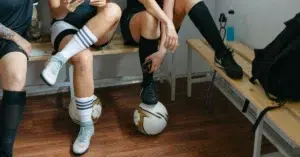Sitting becomes part of a regular daily routine for people who have been performing desk work for a long time. Sustained inactivity causes several health problems, such as uncomfortable teeth and sometimes concerning conditions such as leg swelling. The primary reason for swelling is the accumulation of fluid in the tissues. This occurs due to gravity pulling the blood downwards when the body remains stationary. However, prevent feet swelling while long sitting is a concern often overlooked.

Credit to cottonbro studio | Pexels
The following strategies can be adopted to combat the aftereffects of long sitting, such as inadequate blood flow and fluid accumulation in the lower extremities. Efficient exercises include regular foot and ankle exercises such as foot pumps, which promote the flow of blood toward the heart and prevent its homogenization in the feet and ankles. Also, having a proper and ergonomic sitting position can minimize the chances of the feet swelling.
The overall circulation of the space should also be taken into account. It implies introducing habits such as regular short pauses to stand or even walk that help both in muscle activation and improved blood circulation. Proper blood circulation is also ensured by wearing loose clothing and comfortable footwear, which also prevents blood vessels from being squeezed tightly. People can avoid swollen legs and feet through these practices and ensure better vascular health.
Understanding Feet Swelling
Swelling of the feet and legs is experienced almost always by those who sit for a long time. This part of the segment unravels why this disease is manifested and the risks that come with it when sedentary behavior is prolonged.

Source: https://certifiedfoot.com/how-to-treat-swollen-feet-ankles-and-legs/
Causes of Swollen Feet and Legs
Swollen feet and legs refer to a condition that occurs when fluid gets trapped in the areas, often due to reduced blood circulation. Prolonged sitting can impede blood flow back to the heart, leading to swelling. Other causes include varicose veins, which obstruct circulation, and venous insufficiency, where veins fail to return blood to the heart efficiently. Weakness in the heart’s pumping ability can also contribute to swelling. Additionally, deep vein blood clots, especially in the legs, may cause swelling.
Risks Associated With Prolonged Sitting
Spending long periods in a seated position increases the risk of the development of severe swelling. It results in a more complicated situation in venous insufficiency, with consequences such as skin changes or ulcers. If someone with peripheral edema ignores a problem, the lasting pressure may result in varicose veins. Moreover, a sedentary lifestyle increases the chances of deep vein thrombosis. The latter is a severe condition in which a blood clot forms and can break off and travel to the lungs, causing a pulmonary embolism. Finally, it should be noted that prolonged immobility can be one of the specific systemic health problems.

Credit to Studio Republic | Unsplash
Some Preventative Practices
Some habits, such as wearing uncomfortable shoes and not taking breaks from sitting, could feet make feet swollen while sitting for a longer time.
Optimal Sitting Positions
Proper posture is vital to keep feet from swelling up. People should sit at work with their feet on the ground and not cross their legs to ensure sufficient blood flow. Additionally, a person should utilize a footrest, if required, to create an approximately 90-degree angle between their thighs and calves. Fluctuating from resting one foot to the other foot continuously on the footrest also helps.

Source: designbundles.net
Importance of Movement and Stretching
It is essential to move around and stretch constantly to stimulate circulation. For example, ankle circles—rolling the ankle clockwise and then counterclockwise—can be carried out every hour to improve blood circulation. Moreover, knee lifts and leg extensions should be done to keep the fluids from pooling down in the lower extremities during long sitting.

Ankle circles can be carried out every hour to improve blood circulation.
Source: skimble.com on Pinterest
Dietary Considerations
A diet with good nutritional value will be very helpful in the management of body weight and the reduction of water retention. For instance, including foods that are a good source of potassium and magnesium, like bananas and leafy greens, will help in this. Besides that, maintaining fluid balance is very important. Therefore, one should not take too much salt, which can cause swelling.

Credit to Robson Melo | Unsplash
Effective Exercise Routines
Regular exercise, even tilted towards the legs and feet, is a priority for those people who sit at the office daily. This will keep normal blood flow, no swelling, and no pain in the lower ends.
Simple In-Seat Exercises
Ankle Circles: Perform a circular motion with both feet in turn while squeezing the calf muscles to enhance blood circulation. Perform 5 rotations in each direction and switch feet.
Foot Pumps: Start with your feet flat on the ground. The technique begins with raising the toes as high as possible and with the heels on the floor, followed by lowering and lifting the heels while the toes remain on the floor. Take 10 repetitions to maximize blood flow through the feet and the calves.
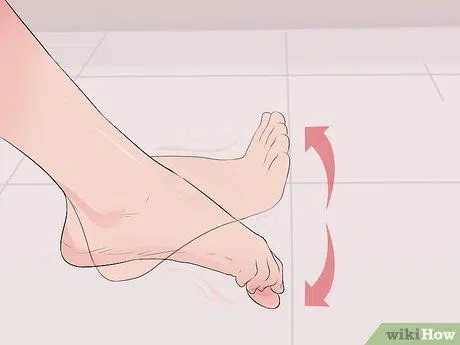
Credit to wikiHow on Pinterest
Regular Leg and Foot Workouts
Leg Lifts: Keep one leg straight and stay in this position for a few seconds before slowly lowering the foot to the ground. Alternate legs. This exercise not only helps in reducing the swelling, but also activates thigh and lower leg muscles.
Calf Raises: Feet shoulder-apart, rising on tiptoes, then back to the starting position. This works calf muscles to move blood back up the legs. Go for three sets of 15 repetitions.
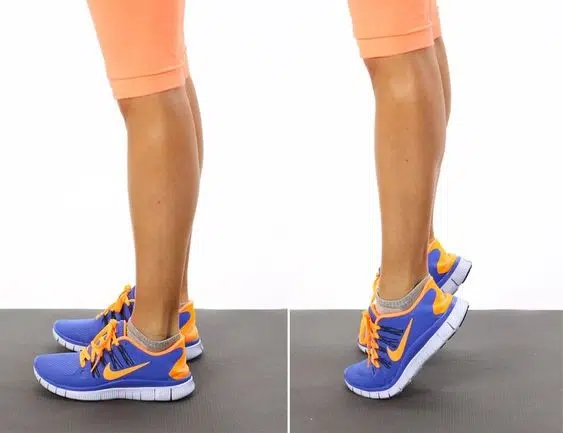
Credit to PS on Pinterest
Through regularly performing these exercises, one can work with the leg muscles, and this helps to decrease the risk of swelling as well as stimulate overall leg health.
Lifestyle Modifications and Medical Interventions
This part of the section discusses the practical changes in everyday routines and how to seek medical advice and prevent swelling in one’s feet due to prolonged sitting.
Adapting Daily Habits
Comfortable Footwear: Shoes that allow air circulation can greatly reduce the likelihood of foot swelling. The shoes need to offer gentle compression so as not to be tight as a result of good blood flow during a long time of sitting.
Compression Solutions: Compression stockings or socks are specifically designed to evenly apply pressure to prevent fluid accumulation in the legs, known as edema, a major cause of the swelling. It’s important to be able to determine the right level of gentle pressure for your requirements.
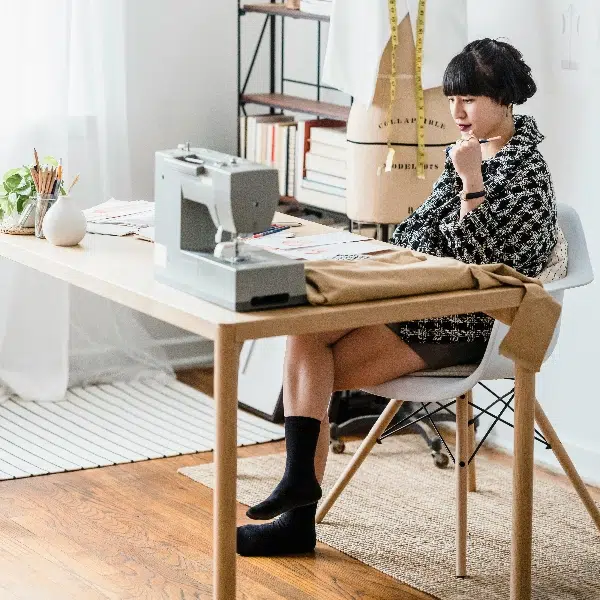
Credit @Michael Burrows | Pexels
- For Mild to Moderate Swelling: Light compression socks may be enough.
- For More Significant Swelling: The need for heavy compression stockings may arise.

Avoid Restrictive Clothing: Make sure that clothing around the legs and waist is not too tight to the point that it makes swelling worse.
Regular Movement: Sit for no longer than 40 minutes and then stretch or walk around to stimulate the circulation in the lower legs. Even a short walk or leg stretch has its place as well.
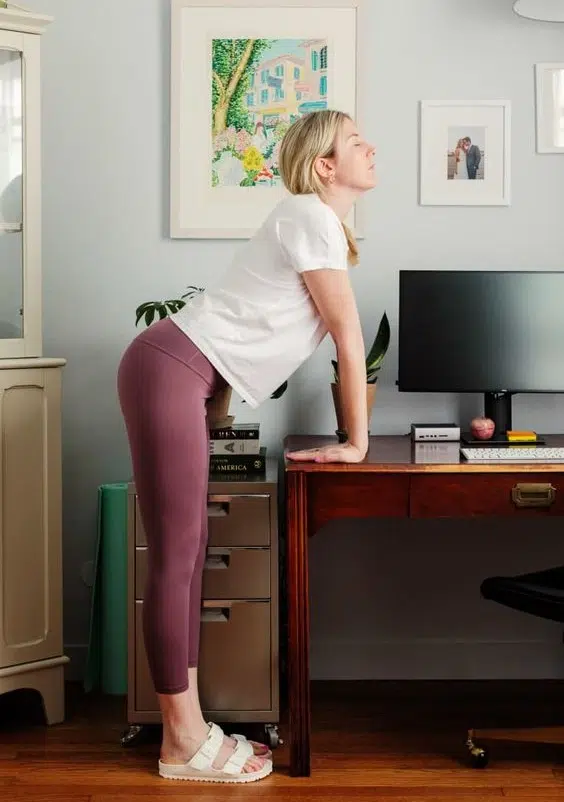
Stretch or walk after prolonged sitting to stimulate circulation.
Credit to Apartment Therapy on Pinterest
When to Seek Medical Advice
Persistent Swelling
If continued foot swelling and other symptoms like leg pain or shortness of breath occur, it may indicate health issues. This could include conditions like high blood pressure, lymph node enlargement, or heart failure.
Duration and Severity
If swelling after sitting or noticeable fluid retention is not a regular occurrence, it’s advisable to consult a healthcare professional. They will assess if there is deep vein thrombosis or chronic venous insufficiency.
Changes in Cycle or Health
If the swelling is linked to the menstrual cycle or recent weight gain, meeting with a medical provider is recommended. They can discuss possible lifestyle interventions or special treatments for managing fluid levels and lowering the swelling.
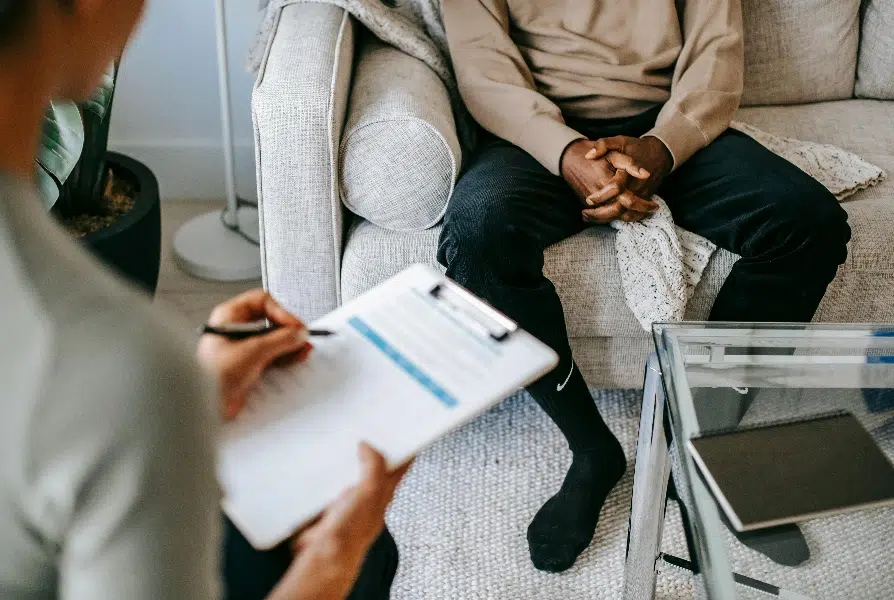
Credit @Alex Green | Pexels
Conclusion
In conclusion, one can easily avoid swelling of the feet during prolonged sitting by implementing an array of practical measures. First, take short walks throughout the day to promote circulation. And it is necessary to perform exercises that improve the overall physical condition. In addition, ensure to drink the required amount of water since it is essential for vein health. Compression socks will also help by stimulating the outflow and preventing edema. The use of stand-up desks and desk peddles can further aid in reducing swelling. Finally, prop up your feet, which will help the fluids flow away and decrease swelling. All the measures, together with a healthy diet, will prevent painful sensations and promote health.

Credit to Office Snapshots on Pinterest
FAQS
1. What causes swollen feet and legs?
Swollen feet and legs occur when fluid becomes trapped in the areas, often due to reduced blood circulation. Prolonged sitting can impede blood flow back to the heart, leading to swelling. Other causes include varicose veins, venous insufficiency, heart weakness, and deep vein blood clots, especially in the legs.
2. What are the risks of prolonged sitting?
Prolonged sitting poses several risks, including severe swelling and complications such as venous insufficiency, varicose veins, and deep vein thrombosis. Additionally, immobility can lead to systemic health problems.



